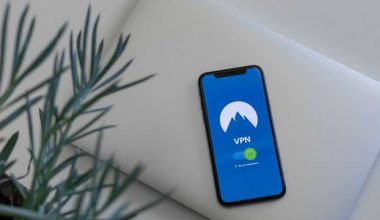
“The workforce has never been as varied as it is today, with full-time and part-time employees, and contingent, freelance, gig, and crowdsourced workers all working in a variety of settings.”
This statement from a recent Deloitte report highlights the fact that businesses are scrambling to adapt to a workplace that’s quickly changing shape.
Customer education can help you ensure that clients, regardless of their location, role or skill profile, are equipped with the information that they need to drive results and make your business successful. Here are three workplace trends and how customer training can respond to each.
Trend 1: Decentralized Offices and Remote Workplaces
According to a forecast of employment trends by the World Economic Forum, flexible work, including virtual teams, is “one of the biggest drivers of transformation” in the workplace. Further, according to Gallup’s 2017 “State of the American Workplace” report, 43% of Americans spent at least some time working remotely in 2016, up from 39% in 2012.
Not only do customers, partners and employees work in offices around the globe, but there is also a notable increase in remote workers who do not work in traditional office settings or the standard 9-to-5 hours. Given the difficulty of gathering employees, customers and partners in one room for training, skills assessments or new product onboarding, organizations need an alternative solution to ensure that these audiences have the information they need to be successful. To this end, companies should prioritize on-demand training options that are not restricted by time zones, geographies, room capacity or instructor availability.
On-demand education includes a mix of content types and typically involves video, interactive simulations and downloadable guides as well as webinars, infographics, slideshows and blog posts. You can optimize on-demand training for both desktop and mobile devices, and its ease of access means that geography no longer presents a barrier to knowledge acquisition. By providing the opportunity for workers to learn when and where they want, you increase the likelihood that they will engage with training and that they will be in the best frame of mind to retain the information.
Trend 2: More Frequent Job Transitions
In a recent Gallup survey, 21% of millennials said they’d changed jobs within the past year — more than three times the number of non-millennials. Further, in a survey on Generation Z by Gartner, only 51% said they could see themselves having a long career at their organization.
Not only do these surveys indicate greater flux in a company’s own employees, but they also mean that your customers and partners are likely experiencing similar levels of turnover and transition. How can you ensure customer retention and satisfaction stay consistent amidst personnel changes? A robust customer education program can help.
To help bring new users up to speed, consider developing a “quick tips” library of short, easily digestible, standardized content that will help learners get up-and-running as quickly as possible. This content can include on-demand resources that address employee or customer transitions. This type of library is also beneficial for current users who need a quick refresher or reminder on a particular topic.
Generational shifts in employment patterns validate the need to create a formal, standardized customer onboarding program. While there’s an upfront development cost for building such a program, the results make the effort well worth it.
Trend 3: Increase in Part-time, Contract, Freelance and Gig Positions
According to a 2017 report from the U.S. Bureau of Labor Statistics, 16.5 million people make up what is known as the “gig economy.” What’s more, according to a 2018 report from Upwork, 48% of U.S. companies use freelancers, and 63% have remote workers.
This shift away from the traditional, single, 9-to-5 job has prompted the need for training resources that adapt to these varied schedules and to the fact that the knowledge required for a particular role is much more limited. For example, a contract-based information technology (IT) manager who is brought in only when there is an issue will require more limited onboarding and company information than a full-time program manager. In these cases, the power of a customer training program lies in its ability to offer multiple, highly tailored learning paths.
By creating multiple portals or course series, you can provide users with only the information they need. For gig, contract and freelance audiences, look to content that is short, easy to consume and to the point. For example, if you’re training a gig employee on your software, limit training to the “need-to-know” capabilities using on-demand video walk-throughs, slideshows and skills assessments. While accounting for short-term, non-traditional users is a shift in mindset and strategy for many businesses, the growth of this workforce means you cannot afford to ignore them.
While keeping pace with the changing workforce can seem overwhelming, building a strong customer education program is an effective way to proactively address a number of the associated challenges. With the creation of on-demand, tailored content, you can ensure that your employees, customers and partners have the skills and knowledge they need to be successful in their roles, while also addressing the new face of the workforce.







